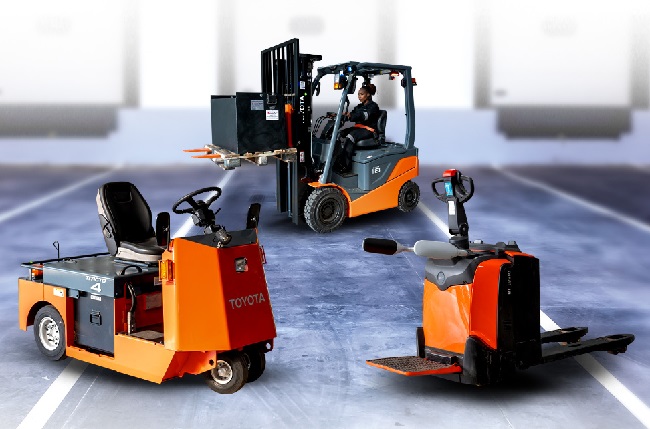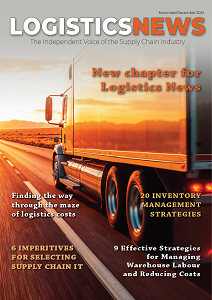Productivity is key in warehouse operations and managing your forklift fleet more effectively can enhance a company's operational effectiveness, boosting productivity & safety. Today, telematics technology has transformed forklift fleet management, providing businesses with real-time data and insights that allow for better decision-making and greater control over their warehouse operations.
Toyota Material Handling was the first company in the industry to introduce its proprietary telematics technology as standard equipment on electric forklifts in 2008. “Today, the business operates over 200,000 connected forklifts internationally, delivering valuable data and insights to enhance efficiency and optimise operations” explains Stephen Mostert, National Technical Manager at CFAO Equipment. He outlines the benefits of using telematics technology in pursuit of more efficient operations:
Improve productivity
Productivity directly translates to profitability in warehouse operations. Telematics technology enables businesses to monitor the real-time performance and usage of each forklift, tracking key metrics such as operating hours, load weight, idle time, fork position and even details on battery health.
This data is then transmitted to fleet managers through detailed reports, providing them with a clear view of each forklift’s performance. By identifying underperforming equipment or potential breakdown risks, fleet managers can take proactive steps, such as scheduling maintenance or redistributing workloads to other forklifts.
Identify inefficiencies
Telematics technology helps companies identify inefficiencies by tracking forklift usage. For instance, if the data shows certain forklifts are idling for extended periods, fleet managers can investigate the cause and make necessary adjustments to optimise operations.
Whether the issue stems from poorly optimised routes, lack of coordination between warehouse workers or overworked equipment, the ability to pinpoint these inefficiencies through telematics empowers businesses to make data-driven decisions, enhancing workflow and minimising operational delays.
Enhance safety
A critical advantage of telematics technology in forklift fleet management is its ability to improve safety. Forklifts are powerful machines that can pose significant risks in busy warehouse environments, especially when not operated properly.
Telematics allows fleet managers to track crucial safety data, including forklift speed on impact, the frequency of sudden stops, impacts and sharp turns. In cases of repeated safety violations, fleet managers can take corrective action, such as retraining operators or introducing stricter safety measures.
Manage scalability
As operations expand and more forklifts are added to fleets, managing a large number of vehicles can become increasingly complex and time-consuming.
With telematics, fleet managers can easily oversee a larger fleet from a single dashboard, providing a comprehensive view of performance across multiple locations or warehouses. On the flip side, Mostert notes that telematic data can also reveal when operations have an excess of forklifts. “With telematics insights, we can conduct site surveys to determine if customers have too many drivers or pieces of equipment, and whether a forklift should be replaced with a reach truck or another type of machinery.”
Track forklifts
Telematics technology enables fleet managers to continuously track the location of each forklift. In large distribution centres, forklifts can often be misplaced, and operators may struggle to find the right equipment when needed.
With GPS-enabled telematics systems, fleet managers can ensure that forklifts are in the correct locations, minimising time spent searching for equipment and optimising the flow of goods within the facility.
“Forklifts are always on the radar with telematics. For example, during the unrest in KwaZulu-Natal in 2021, we were able to track and remotely disable connected forklifts to prevent them from being removed from our customers’ premises,” notes Mostert.
Check operator credentials
One of the standout features of Toyota’s I_Site is its ability to lock out operators who have not completed their on-screen safety checklists or renewed their licenses. “Every operator has a unique pin code that they enter every time they use a forklift. As part of the initial onboarding process, the operator’s license is verified and its expiration date is entered into the system.”
“I_Site then prompts fleet managers three months ahead of time when a driver’s licence is close to expiring. If the licence is not renewed in time, the operator is locked out of the system. Fleet managers cannot alter an operator’s status on I_Site unless they have proof of the renewed licence.”
For businesses relying on forklift fleets to maintain smooth operations, telematics is no longer a luxury. “As businesses continue to face pressure to improve efficiency and reduce operational costs, telematics technology is a necessity for gaining the competitive edge”, concludes Mostert.

.jpg)


